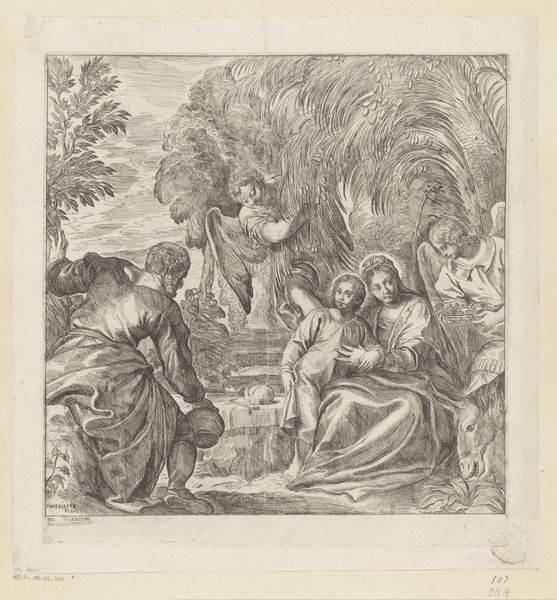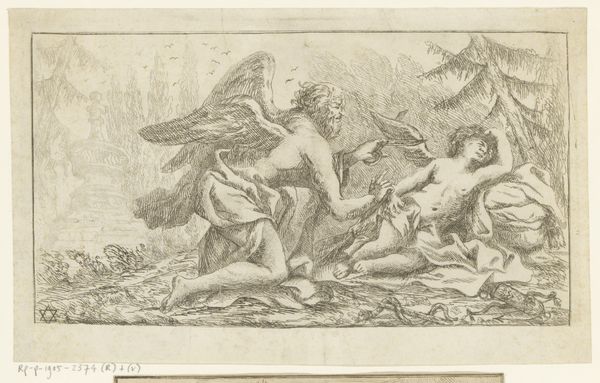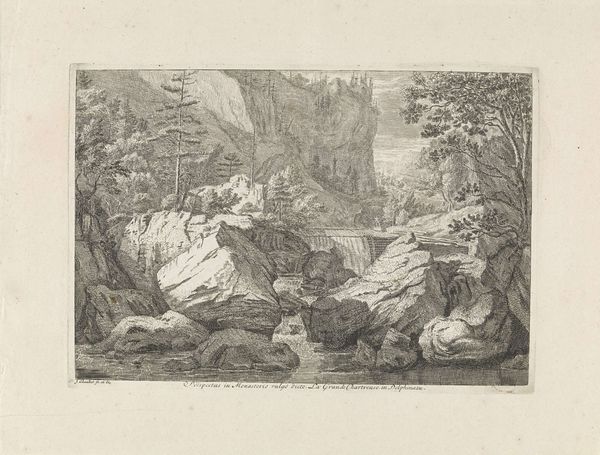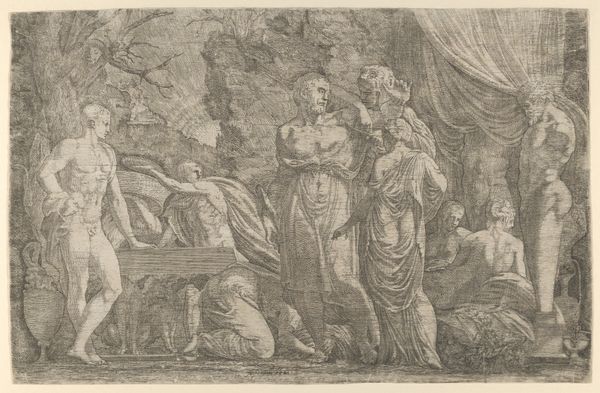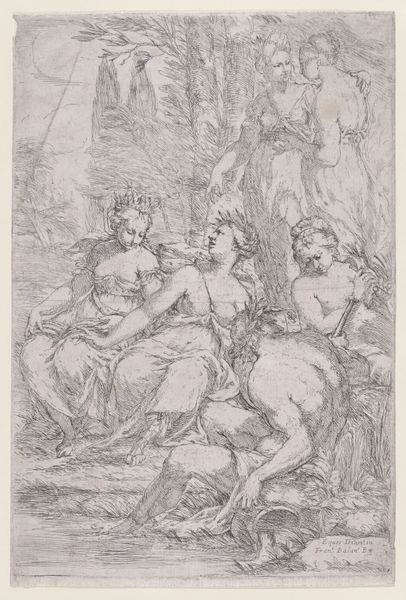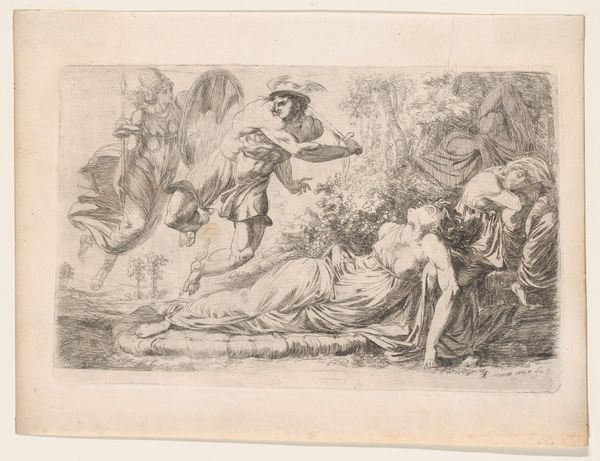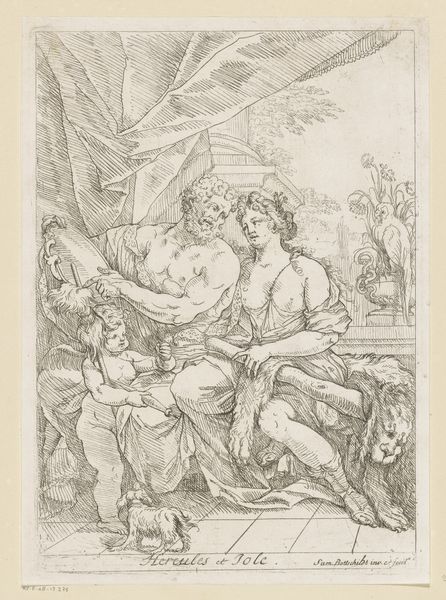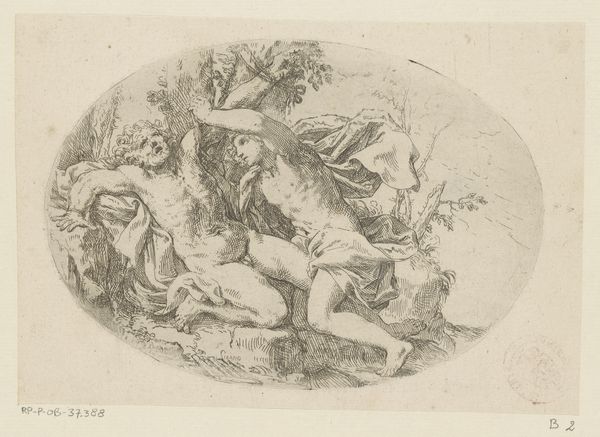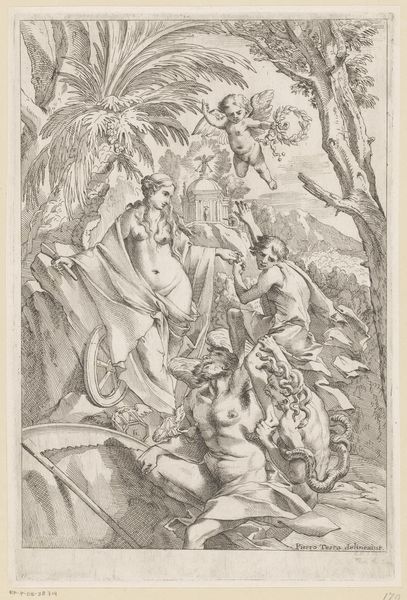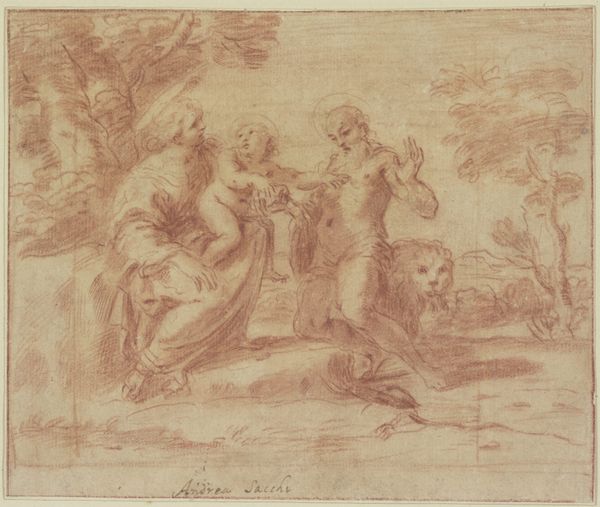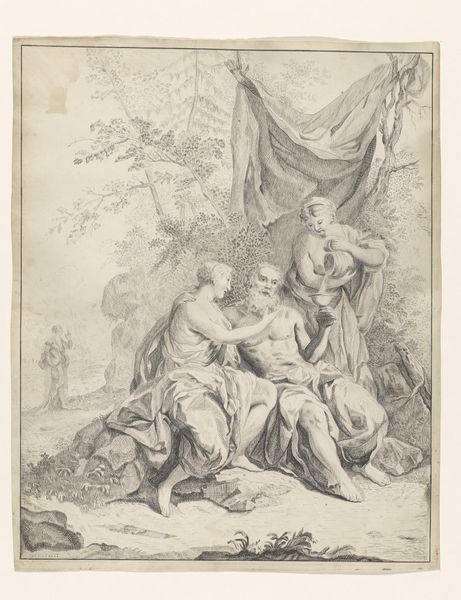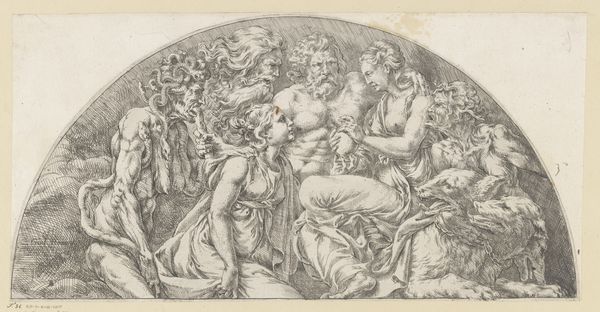
engraving
#
narrative-art
#
baroque
#
figuration
#
history-painting
#
engraving
Dimensions: height 181 mm, width 204 mm
Copyright: Rijks Museum: Open Domain
Editor: Here we have Samuel Bottschild's engraving "Lot and His Daughters," created in 1693. The cross-hatching creates a fascinating texture, but I find the subject matter… unsettling. How can we understand this piece? Curator: Well, as a materialist, I see the act of engraving itself as paramount. The artist painstakingly used a burin to carve these lines into a metal plate. Each line, each mark, is a result of labor and skill. Considering the context, engraving allowed for mass production and dissemination of images to a wider audience beyond the elite. How does the story of Lot influence the consumption and understanding of this image in 17th-century Netherlands? Editor: I hadn't considered the printing aspect! I was focusing on the figures and the narrative, but you are right. So, how would the typical person viewing it then interpret the materials and method? Curator: The readily available prints influenced both visual culture and moral standards. Bottschild's choice of engraving over, say, painting, makes the image both more democratic and allows one to draw certain socio-historical conclusions about visual content distributed through print media. Note, for instance, how the clear, reproducible lines potentially sanitize or aestheticize the scene itself. What do you make of the differences in depictions of similar subjects at the time depending on their medium and distribution? Editor: It sounds like it was easier to digest provocative images that way, so viewers could find pleasure and judgment within the same frame. Thinking about materiality, the lines that you have brought up aren’t trying to deceive the eye with painterly illusionism. The cross-hatching calls more attention to the process itself. Curator: Precisely. The “Lot and His Daughters” story would've been well-known then. And here it is presented as part of a broader visual economy dependent on materials and dissemination. Thinking of the moral implications with this viewpoint brings out more nuances. Editor: That makes a lot more sense. Thanks! Looking at it this way helps me understand how material shapes interpretation, giving me a better way to think about engravings beyond just illustration.
Comments
No comments
Be the first to comment and join the conversation on the ultimate creative platform.
